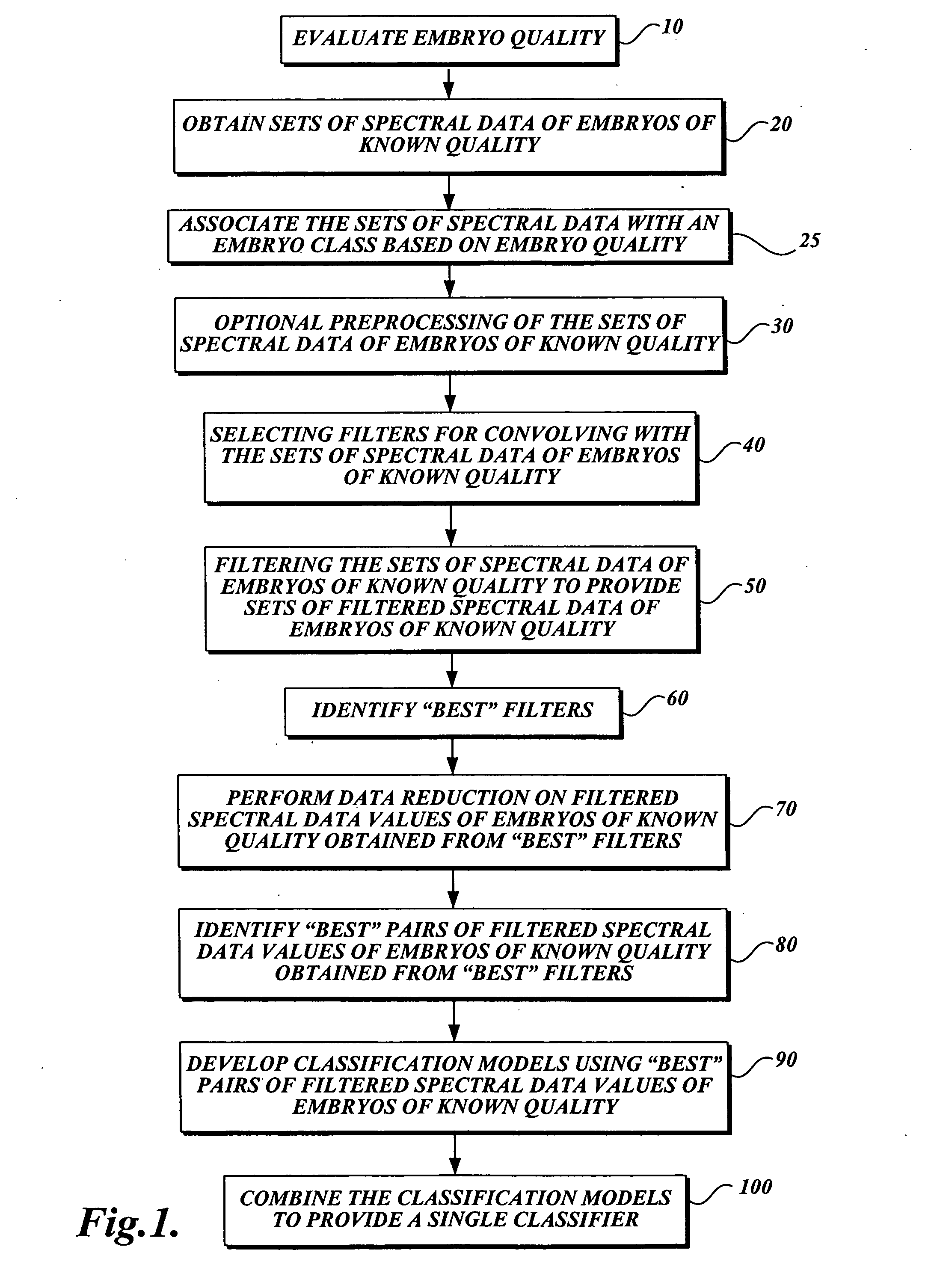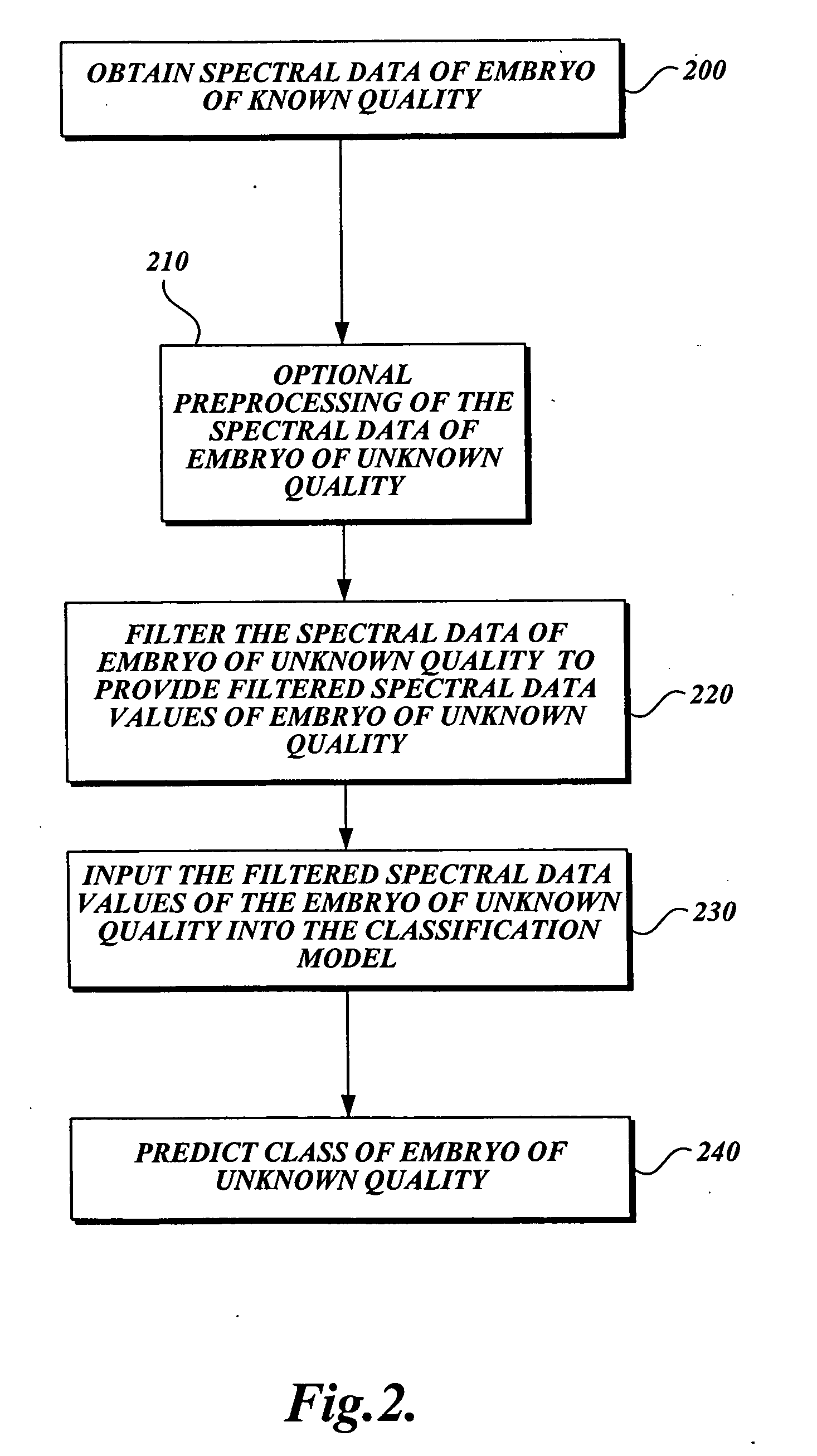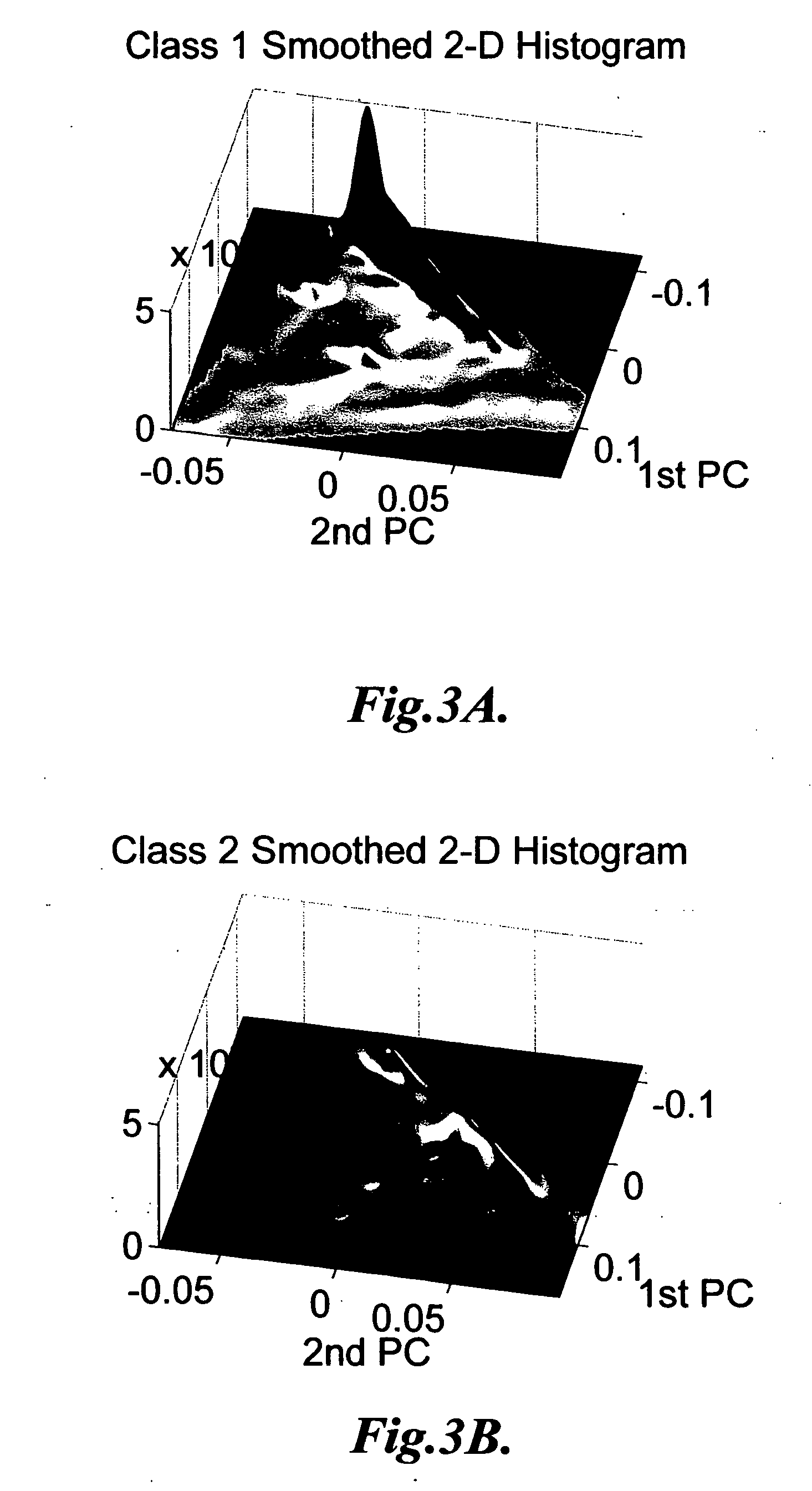Methods for processing image and/or spectral data for enhanced embryo classification
- Summary
- Abstract
- Description
- Claims
- Application Information
AI Technical Summary
Benefits of technology
Problems solved by technology
Method used
Image
Examples
example
[0071] Three genotypes of somatic embryos were used to develop and test a classification model developed in accordance with the present invention. NIR reflectance spectra were obtained from somatic embryos of known quality (thus associated with certain class labels). The spectra were preprocessed, filtered, then used to estimate logistic regression models, a principal component transform and a Parzen-Bayes classifier. Test set of data were then used to assess the goodness of the classification method. A more specific description is provided below.
[0072] Three classes of germination potential or vigor: non-germ (ng), germ small (gs), and germ transplantable (gt), were assigned to the embryos from the three genotypes. One logistic regression model is fit for comparing each embryo class against the others, i.e., non-germ versus germ small, non-germ versus germ transplantable, and germ small versus germ transplantable.
[0073] The collected spectral data from embryos of known quality ar...
PUM
 Login to view more
Login to view more Abstract
Description
Claims
Application Information
 Login to view more
Login to view more - R&D Engineer
- R&D Manager
- IP Professional
- Industry Leading Data Capabilities
- Powerful AI technology
- Patent DNA Extraction
Browse by: Latest US Patents, China's latest patents, Technical Efficacy Thesaurus, Application Domain, Technology Topic.
© 2024 PatSnap. All rights reserved.Legal|Privacy policy|Modern Slavery Act Transparency Statement|Sitemap



